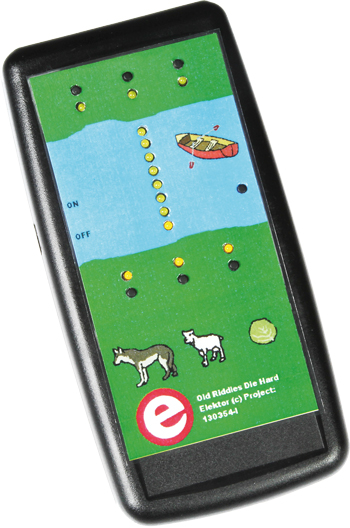

#PEG SOLITAIRE C CODE CODE#
Totals: 5 Main classes +1 Turing, 2390 Lines of code, 4 Subclasses, 33 Methods, 128 VariablesĪttached: 2 code snippets, one from Pegs one from PegsMenu, Methods and variable documentation, Pegs.zip (The Game Archived)įull source: Available by request (only ppl high on compsci hiarchy) Time: About a month and a half, most of which was 30minutes a day in classĮxperience: Second year java, first year java gui, self taught most.


Mark: Handed this in for my Comp Sci ISU and i got 100% (Most people already have the JRE installed for playing java games online) Requirements: Pent 2 or higher CPU, Any OS w/ JRE. Special Features: Completely GUI driven, GUI Menubar, Fully colour customizable, Custom cursor, Images are all custom made (pixel by pixel) from within java, Dynamically scaleable from 4x4 to 10x10 layout, Ability to create your own levels. Level 9 (custom) is currently the diamond 9x9 solitaire game, but this game is very dynamic and you can create your own levels (up to 10x10), and your own board styles. Level 7 & 8 are special, to beat them you start with the solitaire level and you have to remove pegs until you match the required layout. Solitaire is considered the main game, but it is recomended that you finish the levels leading up to it to learn the peg removal tricks. This version contains 10 levels, Cross, Plus, Fireplace, Up-Arrow, Pyramid, Diamond, Solitaire, Wall, Square, and Custom. The object of this game is to jump over another peg (like Capture in checkers), and the jumped peg will be removed, the goal is to have only 1 peg remaining, and preferably in the center (but it doesnt need to be). Also it is a fun challenge to beat the solitaire level in the shortest time. Peg Solitaire has been around for over a century, as far as mid 1800's and it has always been fairly popular with mathematitions trying to calculate the shortest posible move sequence. It is fun, but challenging, game with all the features you would expect. Pegs is a revamped, highly customizeable version, of the classic peg solitaire. Posted: Mon 11:01 am Post subject: Peg Solitaire G.Wiki Blog Search Turing Chat Room Members.Bell, Notes on solving and playing peg solitaire on a computer (2014), Beasley, On 33-hole solitaire positions with rotational symmetry (2012), Bell, Solving triangular peg solitaire, J. Bell, Triangular peg solitaire unlimited, Games and Puzzles J. Gardner, Peg Solitaire, in Knots and Borromean Rings, Rep-Tiles and Eight Queens, Guy, Purging pegs properly, in Winning Ways for Your Mathematical Plays,Ģnd ed., Vol. Beasley, The Ins and Outs of Peg Solitaire, Oxford Univ.

On an infinite board is an interesting computational challenge. Searching for all n-peg symmetric or unique winning jump puzzles We would expect additional problems solvable only on a sufficiently large board. Similarly, in going from the French board to an infinite board, We saw in going from the English to French board that additional puzzles were found that were solvable on theįrench board but not on the English board (Figure 5c). This means that in some sense these puzzles exist independently of any particular board. Table 4: A summary of board positions with a unique winning jump by pegs and maximum starting jumps,Īny solvable board position presented above is also solvable when considered on an infinite board. This indicates there are no n-peg board positions with a unique winning jump. There is sometimes a unique board position with as many jumps as possible and one winning jump. We note that for a particular board and number of pegs n, (the programs can also display solutions). Table 4 summarizes the results of these calculations,Īnd Figures 10- 12 show example board positions calculated using this strategy.Īll of these puzzles can be played on my Javascript programs Table 2: A count of solvable board positions for the various symmetry types. Figure 5: Sample solvable boards with an assortment of symmetry types. (the minimum value of the board code over all symmetry transformations).Ī board position is conveniently (but not efficiently) stored in a single, 64-bit integer. We do not store duplicate copies of board positions which are rotations or reflections of one another,Įach symmetric board position has a single entry, determined by the mincode() For details on how these calculations are done, see.


 0 kommentar(er)
0 kommentar(er)
